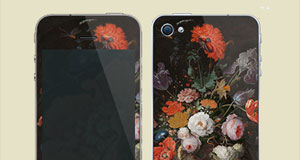…; ? acquired in Spain,{The bust could already have been sent to Spain as a Habsburg possession as early as the 16th century; for a similar transferal, see J. Duverger, ‘Margareta van Oostenrijk (1480-1530) en de Italiaanse Renaissance’, in G. Denhaene (ed.), _Relations artistiques entre les Pays-Bas et l’Italie à la Renaissance: Études dédiées à Suzanne Sulzberger_ (_Études d’Histoire de l’art_ 4 ) Brussels 1980, pp. 127-42, esp. p. 135.} by Dmitri Egorovich Schevitch (‘Baron de Schevitch’) (1839-1906), c. 1900;{Dmitri Egorovich Schevitch was a Russian diplomat who ended his career as ambassador in Madrid (1896-1905). Prior to this, Schevitch served at missions and embassies in Naples (1860-62), Rome (1862-63), Stuttgart (secretary of the Russian mission) and Württemberg (1863-67), Stockholm (1867-69), Florence, Naples and Rome (1869-83), Tokyo (as minister plenipotentiary, 1886-92), and Lisbon (1892-96). Schevitch was married to Vera Fedorovna Mengden (d. 1913), the daughter of Baron Fedor Mengden. He died in Versailles and laid to rest at the Russian cemetery in Wiesbaden. My thanks to Maria Gordusenko for this information. Dmitri Schevitch was an esteemed art collector, with a preference for Asian and medieval art, see for example A. Lumb Macdonnell, _Reminiscences of Diplomatic Life, being Stray Memories of Personalities and Incidents Connected with Several European Courts and also with Life in South-America Fifty Years Ago_, London 1913, pp. 274-75: ‘M. de Schevitch was an ardent collector and subsequently, when Ambassador at Madrid, acquired that wonderful bust with sapphire eye, which caused so much discussion in antiquarian circles’. For Schevitch in Japan, see also A.C. Gunter, _My Japanese Prince_, New York 1904.} his sale, Paris (Galerie Georges Petit), 4-7 April 1906, no. 310, frs. 6000, to (? Jules) Lowengard, Paris; {Copy RKD, with ‘Lowengard’ in the margin. This likely refers to the Parisian dealer Jacques Jules Lowengard (d. 1909), though the annotation could also be referring to Charles Lowengard (d. 1923), a Parisian banker and art collector, located at 26, Avenue des Champs Elysées. The possible family connection between Jacques Jules and Charles is unclear. Jacques Jules Lowengard was married to Esther Duveen, the sister of the dealer Joseph Duveen. Their son, Armand Lowengard (1893-1943), was co-director of the Duveen gallery, together with Edward Fowles, see for example M. Secrest, _Duveen, a Life in Art_, New York 2004, pp. 37, 67. The _Mater Dolorosa_ is not listed in the sales of Lowengard’s dealership inventory in 1910 and 1911 - largely consisting of Flemish tapestries and medieval art (see his sale Paris (Drouot), 10 June 1910 and 3-4 March 1911). Considering his penchant for the Middle Ages, Jacques Jules Lowengard is the most likely purchaser of the bust. In that case, the bust was either re-sold it prior to his death in 1909 or it perhaps came into the possession of his brother-in-law, Duveen. The Rijksmuseum purchased the _Martelli Stemma_([BK-NM-11904](https://data.rijksmuseum.nl/20036005)) from the dealer Löwengard in London in 1905. The _Mater Dolorosa_ is also listed nowhere in the auction catalogue (1923) of Charles Lowengard’s collection (my thanks to the late Erik Löffler, The Hague).} …; acquired by Baron Heinrich Thyssen (1875-1947), The Hague/Villa Favorita, Lugano-Castagnola, probably between 1930-38,{The bust is not mentioned in the 1930 catalogue of the Thyssen collection (_Sammlung Schloss Rohoncz: Plastik und Kunstgewerbe_, exh. cat. Munich (Neue Pinacothek) 1930) and must therefore only have been acquired after this year, though probably before 1938. In the period prior to that year Thyssen made many acquisitions for his Villa Favorita in Lugano-Castagnola. He had moved there from The Hague in 1932. My thanks to Maria de Peverelli for this information (written communication, 23 July 2015).} first recorded in 1941;{A. Feulner, _Sammlung Schloss Rohoncz._, vol. 3, _Plastik und Kunsthandwerk_, Lugano-Castagnola 1941, p. 35 and no. 66.} his son Baron Hans Heinrich Thyssen (1921-2002), Villa Favorita, Lugano-Castagnola, 1947; on loan to Museo Thyssen-Bornemisza, Madrid, 1996-2004;{Madrid, Museo Thyssen-Bornemisza, inv. no. K 66.} his heirs, Madrid, 2002; whose sale, London (Sotheby’s, private treaty), €750.000, to the Rijksmuseum Fonds, with the support of the BankGiro Loterij, 2011
Bibliography and list of abbreviations for the provenance (pdf)


